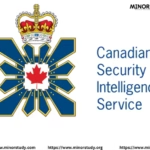The Office of Strategic Services (OSS) was the United States’ first organized intelligence agency, established during World War II to coordinate espionage, sabotage, and other covert operations against Axis powers. It served as the precursor to modern intelligence agencies like the Central Intelligence Agency (CIA) and the U.S. Special Operations Command.
Overview
Established: June 13, 1942.
Dissolved: October 1, 1945.
Founder: Major General William J. Donovan, often called the “Father of American Intelligence.”
Mission: To collect and analyze strategic intelligence and conduct unconventional warfare in support of the Allied war effort.
Key Functions
Espionage and Intelligence Gathering:
Conducted covert intelligence operations in Europe, Asia, and Africa.
Recruited agents to infiltrate enemy territories and report on troop movements, weapon developments, and strategic plans.
Propaganda:
Created and disseminated misinformation to demoralize enemy forces and influence civilian populations.
Produced films, leaflets, and radio broadcasts to spread Allied propaganda.
Sabotage Operations:
Trained operatives to disrupt Axis supply chains, infrastructure, and communication networks.
Support to Resistance Movements:
Provided arms, training, and logistical support to resistance groups in occupied territories, such as the French Resistance.
R&D for Covert Tools:
Developed innovative tools and weapons, including silenced pistols, disguised explosives, and the precursor to modern scuba gear.
Counterintelligence:
Worked to identify and neutralize Axis spies and sabotage efforts against Allied forces.
Structure
The OSS had several specialized branches to manage its diverse operations:
Secret Intelligence (SI):Focused on gathering intelligence through covert agents in enemy territory.
Special Operations (SO):Conducted sabotage missions and supported resistance movements.
Morale Operations (MO):Handled propaganda and psychological warfare.
Research and Analysis (R&A):Analyzed intelligence and produced reports for military and government leaders.
X-2 (Counterintelligence):Focused on detecting and countering enemy espionage.
Operational Groups (OGs):Conducted guerrilla warfare and sabotage missions behind enemy lines.
Notable Operations
Operation Jedburgh:
Parachuted small teams into Nazi-occupied France to work with the French Resistance.
Operation Ginny II:
A sabotage mission targeting Axis railway lines in Italy, though ultimately unsuccessful.
Intelligence on D-Day:
Provided critical intelligence for the Allied invasion of Normandy, including troop placement and geography.
Burma Operations:
Assisted guerrilla forces against Japanese troops in Southeast Asia.
Challenges and Limitations
Coordination with Other Agencies:
Faced conflicts with the military and FBI over jurisdiction and authority.
Operational Risks:
Many missions were high-risk, leading to the loss of agents and compromised operations.
Short Lifespan:
Dissolved after World War II due to skepticism about the need for a peacetime intelligence agency.
Legacy and Significance
Foundation for the CIA:
The OSS’s structure, methods, and personnel were instrumental in forming the Central Intelligence Agency (CIA) in 1947.
Advancement of Covert Warfare:
Pioneered techniques in espionage, sabotage, and psychological warfare that are still used today.
Fostering Innovation:
Encouraged technological innovations in espionage tools, many of which influenced modern intelligence equipment.
Contribution to Allied Victory:
Played a vital role in gathering intelligence and disrupting Axis operations, contributing significantly to the success of the Allies in World War II.
Notable Members
William J. Donovan: Director and visionary leader of the OSS.
Julia Child: Served in the OSS before her career as a chef.
Arthur Schlesinger Jr.: Historian and OSS officer.
Allen Dulles: Future Director of the CIA, served as an OSS station chief in Switzerland.
Dissolution and Transition
The OSS was disbanded in October 1945. Its operations were divided:
Strategic Services Unit (SSU): Managed intelligence operations before transitioning into the CIA.
Department of State: Took over some research and analysis functions.
The OSS remains a symbol of ingenuity and courage, laying the groundwork for modern intelligence and special operations. Its legacy is celebrated for its contributions to World War II and the evolution of global intelligence agencies.









you are in point of fact a excellent webmaster. The website loading speed is amazing. It sort of feels that you’re doing any unique trick. Furthermore, The contents are masterpiece. you’ve done a fantastic task in this matter!